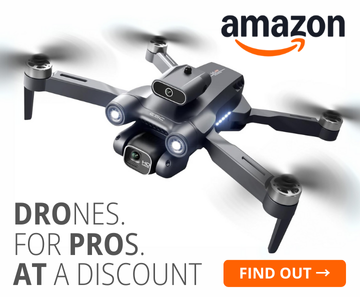 illustration: DALL-E
illustration: DALL-EIn the latest report "The New Search Reality: GEO, SGE – SEO in 2025" from Altavia Kamikaze + K2, a bold message emerges: the rules of digital visibility have changed, and brands that fail to adapt risk becoming invisible. As AI-powered tools like ChatGPT, Gemini, Claude, and Perplexity reshape how users discover information, a new metric dominates the landscape - Share of Voice (SoV).
What is Share of Voice (SoV)? It’s a marketing metric that measures a brand’s share of the total advertising space or conversation in a market or channel. It is expressed as a percentage, and shows how loudly a brand "speaks" compared to its competitors. SOV can exceed 100% when a brand generates far more buzz than its market share suggests. Through intense campaigns, viral content, or strong social media activity. In such cases, the brand captures a disproportionate amount of audience attention, effectively "stealing" communication space from its rivals.
SoV measures how frequently a brand appears in AI-generated responses within a specific category. Unlike traditional SEO, this is no longer just about keywords and backlinks - it’s about how AI understands, selects, and trusts your brand. In the AI search era, presence alone doesn’t count. Perception is everything.
Massive gaps, Fierce competition
The Chatbeat-powered study analyzed 2,000 brands across 40 categories and revealed massive disparities in SoV. The highest recorded score reached 791.34%, while the lowest dipped below 1%. With an average SoV of 59.25% and a median of just 40.34%, most brands - even those in the top 20 - struggle to maintain strong visibility.
| Brand | SoV (%) | Category |
|---|---|---|
| OLX | 791.34% | Classifieds |
| XTB | 738.08% | Investment Platforms |
| LELO | 418.23% | Erotica |
| mBank | 396.99% | Investment Platforms |
| Allegro | 332.70% | Automotive |
| Allegro | 303.02% | Classifieds |
| DOZ | 325.36% | Online Pharmacies |
These results show a new class of dominant players - either vast ecosystem brands like Amazon and Google or highly specialized companies that deliver context-rich, intent-matching content. The report also found that intense competition defines some categories, with margins between top players as narrow as 2–3 percentage points.
From visibility to credibility
AI doesn’t just display results; it makes recommendations. That’s a game-changer. According to Mateusz Rzetecki, SEO & Content Marketing Director at Altavia Kamikaze + K2, the future of SEO lies in credibility: “It’s no longer just about being visible - it’s about being trusted by the algorithm.” That means brands need consistent messaging, content relevance, and domain authority that models like ChatGPT can recognize.
How images hack your brain? 60,000 times faster than words! 👇
Michał Sadowski, CEO of Chatbeat and Brand24, goes further: “We are witnessing the biggest tech revolution in decades. For the first time, Google is losing its search dominance. AI models are now the gatekeepers of brand discovery.” With ChatGPT generating nearly 5 billion monthly visits, how your brand appears - or doesn`t - in AI is now a business-critical issue.
Europe’s AI divide
The report also highlights a striking digital gap across Europe. While Denmark leads in AI adoption with 28% of businesses using it, Poland ranks near the bottom with just 7%. This underlines a serious risk: if Polish brands don`t invest in AI search optimization now, they may simply disappear from future digital conversations.
In the era of Generative Engine Optimization, brands must align with AI-driven discovery - or risk being left behind. The full report is available at https://k2precise.pl/raport-ai-search/.
COMMERCIAL BREAK
New articles in section Marketing and PR
Dance in the media mirror. Between culture, business and viral fame
KFi
Over 78,000 media pieces, 1.6 billion potential views, and 197,500 social media mentions-dance in Poland is no longer niche. With a combined media value exceeding PLN 800 million, it now outperforms MMA, handball, and hockey.
PR in Poland. Ranking of the largest public relations agencies 2025
KFi
The smallest teams often generate the most publications, and agencies outside Warsaw are increasingly capturing media attention. This unexpected distribution of power is one of the key findings from the 2025 PR Agency Ranking in Poland, developed by Widoczni and IMM.
Connected TV and borderless advertising. The ID5 report
KFi
Viewers are moving away from cable TV. And they are doing it en masse. Already 86% of Europeans watch content via Connected TV and global ad spend in this segment is set to double by 2028. The industry is undergoing a communication revolution.
See articles on a similar topic:
Online advertising 2024/2025 report by IAB Poland
KFi
Online ads now consume 57% of all budgets. Companies spent 1.62 billion PLN on video formats alone. After leaner years, the numbers are rising sharply. Digital advertising grew by 20% in a year. Traditional formats are slowly fading.
AI will take up to 70% of traffic from online stores. TrustMate Report
KFi
There is a quiet but radical change happening online. Traditional SEO, which for decades determined brand visibility, is losing its relevance. Now, it's no longer search engines that define a company’s online presence, but generative artificial intelligence.
AI or human? Data on customer preferences in the US, UK, and Canada
KFi
One in three consumers prefers talking to a bot rather than a human, and as many as 86% try to solve the problem on their own first. Still, 74% prefer to call when an issue is urgent. A new report from Five9 shows just how much customer service expectations have changed.
Predictive Analytics in Ads. Customer Doesn’t Know Yet, But Ad Does
Krzysztof Fiedorek
Artificial intelligence is changing the rules of marketing. Predicting customer behaviors through advanced AI algorithms and making data-driven decisions is already the present. The report "The State of AI," published by McKinsey, shows the impact this will have on the advertising and marketing industry.





























